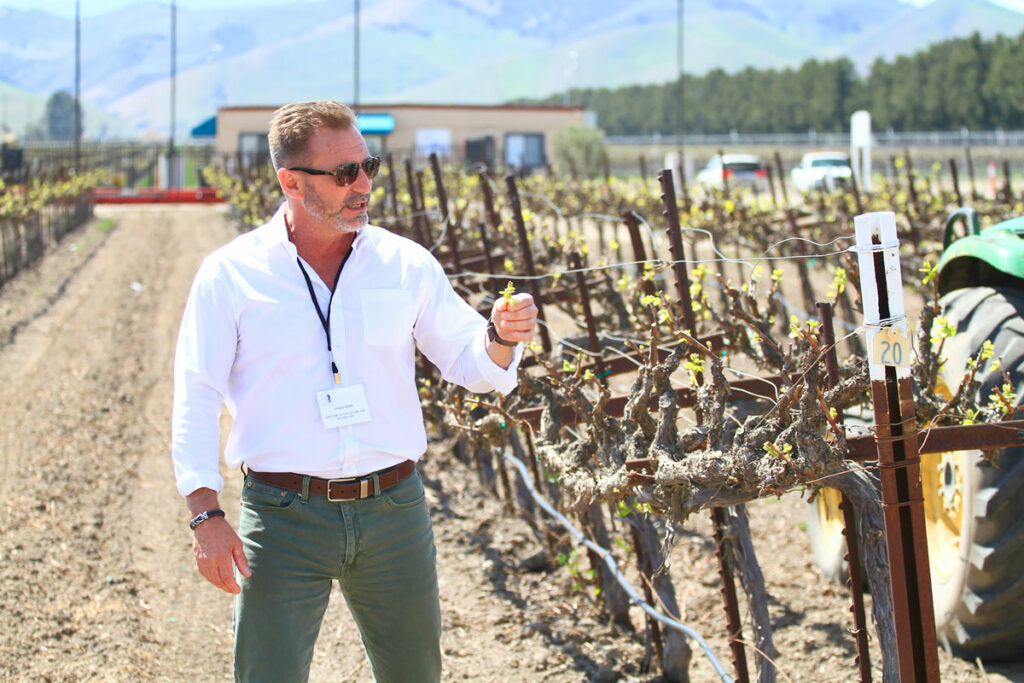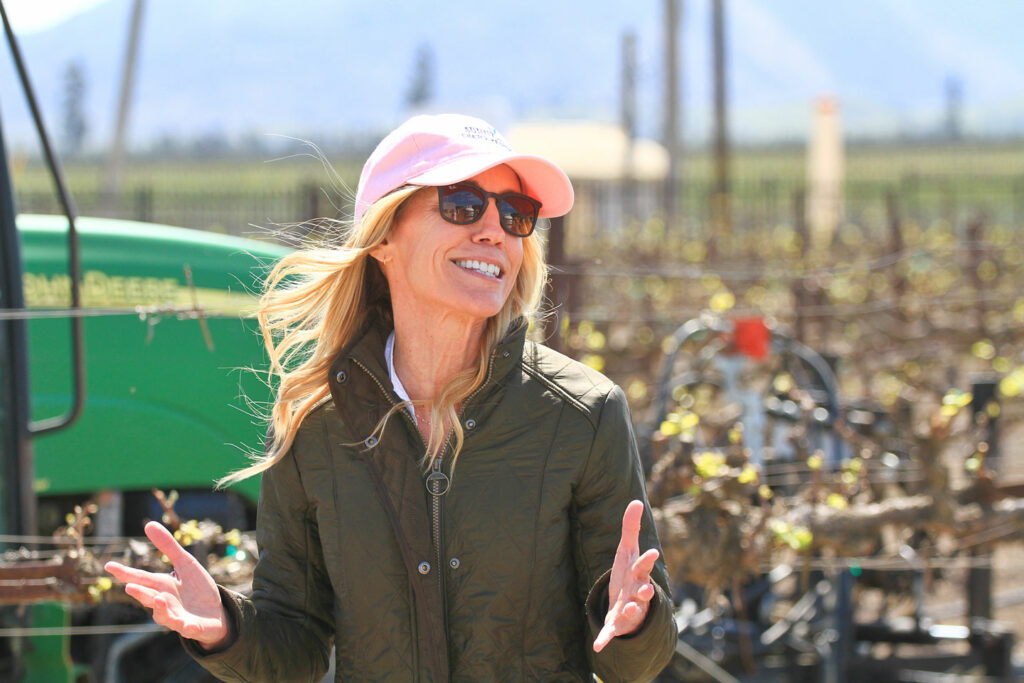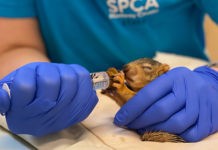
GREENFIELD — Scheid Vineyards is celebrating its 50th anniversary this year and recently hosted an Earth Day tour at its estate winery — just off Highway 101 between Greenfield and King City — to discuss its growing efforts with environmental responsibility in mind.
During the March 25 tour, planned ahead of Earth Day on April 22, management reviewed the winery’s sustainable efforts that blend technology with sustainability, from the giant wind turbine standing over the Greenfield vines to the tiniest of insect larva used as pest control.
“We have enough vineyards to where we can do experiments,” President Scott Scheid said. “With 3,000 acres of vines we farm, there’s always opportunity in our different climates to put together rows and do replicated trials over the years.”
Craig Winn, director of viticulture and technology, added, “We have four of the five growing type regions covered within one company, which doesn’t happen very often, so we’re able to play with techniques.”
“There is a difference between leading edge and bleeding edge,” Scott Scheid said of the importance of testing ideas, from handling insects to developing wine flavors.
The 1.85-megawatt wind turbine, which sits at 230 feet in the air with a total blade height of 400 feet, was installed in 2017.
Executive Vice President Heidi Scheid said the amount of kilowatt hours generated by the turbine is the “equivalent to 3,125 tons of carbon pollution.” She compared that to removing 350 cars from the road or the carbon sequestration of 47,000 tree seedlings over 10 years.
Scott Scheid said the excess energy powers the equivalent of 125 homes. Though the vineyard draws power from PG&E on non-wind days, he noted the turbine produces 200% of the power needed for the winery each year, with excess power put back on the grid.
Though solar power was considered, Scott Scheid said wind made more sense with the area being so windy.
The company worked with the Ventana Wildlife Society to make sure the turbine blades wouldn’t interfere with condor flights in the area. Crops can also be planted up next to the foot of the structure.

Pest control efforts
Winn reviewed the environmentally conscious growing efforts, including the announcement that the company has begun using drones to respond to pests. Vineyard workers can spot pests and identify them, then the proper predator or parasitic insect used to combat that pest can be released specifically on the infested row or rows.
One example Winn gave was cryptolaemus, which has larva that feed on the scale insects that would otherwise harm plants. He explained the tests with insect control were part of the company mission to “provide quality fruit at a reasonable price and be environmentally conscious.”
By using insects to respond to pests, the company sees a reduction in the need for chemical solutions.
Winn said recent price increases in insecticide, as well as other agricultural supplies, is an additional incentive to the desire to reduce the amount of chemicals released not only onto the vines, but also into the area environment. With that larger scope in mind, the specific pest control efforts also reduce the harm to non-target insects.
Another pest control effort Winn reviewed was the Agrothermal system, which can be equipped on a tractor to spray rows with a paraffin-like oil with heat. He also said weed control between rows can be achieved with low blades on tractors, rather than spraying herbicides.
Winn noted with harmful chemicals, it can sometimes be years before a grower sees the impact of what they’ve been putting into the environment.
“Everything we use right now is needs based,” he said not only of pest responses that can be narrowed down to individual rows, but also the use of monitoring technology, including sensors, to know the water, soil and vine conditions.
He compared the current precision methods to the older agriculture practices, which were more “all-in, everything” when it came to responses.
“Everything is precision,” said Winn, explaining that if one vine has a need and not its neighbors, the company can respond to it alone.
Narrowing down specific responses requires technology in place to monitor the vineyard and take readings several times per day. It also takes interaction and communication, with Winn noting Scheid is “replete with communication.”

Sustainable growing practices
Winn also went over growing practices, which include responsible use of resources. Pomace from the harvests, the mixture of plant waste leftover after harvest and initial winemaking, is fermented and made into compost.
Applied to rows, it not only provides nutrients to the vines, but also acts as a mulch to reduce weed growth. A drip watering system means less water is used than irrigation in maintaining the vines.
In addition to the active monitoring and responses, Winn said the company encourages wildlife to assist with the growing efforts. Insectary rows are used to draw desired insects to the vines.
While grapes are self-pollinating, bees are still desired. The company also had 174 owl boxes, including one barn owl box near the tasting room.
There are also perches for predatory birds. Winn said the raptors do a great job at rodent control, from golden and bald eagles to red tail hawks and a variety of owls.
“In some areas, we’ve encouraged coyotes to come with sources of water for them so they’ll predate on the squirrels and rodents,” Winn said. He explained coyote pups might chew lines while teething, but the loss is acceptable since line breaks are a routine part of maintenance anyway.
In conclusion, Heidi Scheid said making innovations requires having a “mindset of continuous improvement” due to the leading edge of agtech always moving further. Scott Scheid added that the innovation and technology in the company are aimed toward product quality.









